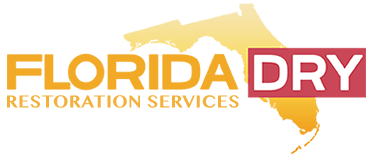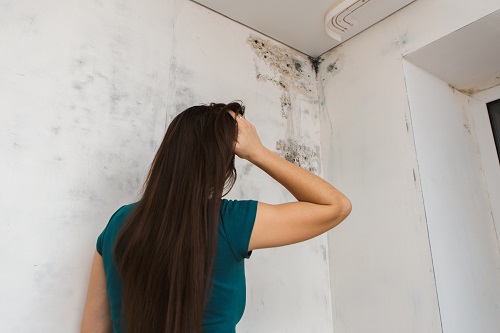Florida is known for its warm weather and wet climate. Many citizens of the state really love the weather and water. Unfortunately, mold can come with that warm weather and wet climate. In fact, high humidity states have higher incidences of mold-related illnesses.
That means more Florida homes are impacted each year by mold than the homes in other U.S. states.
In order to get a handle on mold in your home, you may need to learn some crucial information. For instance, you may want to learn more about what mold is, how it impacts health, how to prevent mold, and how to remove mold. Without these important facts, you may be putting you and your family’s health at risk. Below, you’ll learn the basics about mold.
Mold in Florida Homes
Even though homes in all 50 states are susceptible to mold growth, Florida homes have a higher chance of developing a mold problem.If you are in Fort Myers, Naples, Estero, Bonita Springs, Port Charlotte, Cape coral or anywhere in Florida. Florida has a high humidity index, which means that the air is damper than in drier states. Many Florida residents see some mold growth in small, easy-to-clean areas, like the shower. In this case, a little bit of bleach each week on the affected area can help kill the mold. However, some Florida homes develop serious mold problems that can bring down the value of the property and affect the health of the home’s occupants. While it’s true that a little mold can’t hurt you much, a little mold could turn into a lot of mold—and that’s where your headaches really start.
Defining Mold and Its Impacts
Mold is from the fungi family, but it’s now classified as under its own taxonomy. It needs water to grow. Without water, it cannot flourish. Mold is made up of spores that are everywhere in our environment. In the natural world, mold helps break down decaying materials. Therefore, it serves a purpose. As these spores travel through the air or water, they find suitable areas in which they can grow. When they find these areas, they attach and begin their development. Incidentally, wood and sheet rock are very good places for mold to grow when combined with moisture. That spells disaster for many buildings, as these materials are very common in construction. However, mold needs the right conditions to grow, such as indoor or outdoor flooding, high humidity areas, homes with leaky pipes or fixtures, indoor or outdoor sprinklers that hit the home’s walls, and much more.
Prevention is Paramount
Now that you know a little more about what mold is, you may want to know why it’s important to prevent mold growth and how to stop mold before it starts. As was previously mentioned, a little mold in your shower isn’t that big of a deal, as long as you remove it as soon as possible. However, certain types of mold can be very hazardous to your health. Mold may cause allergic reactions, severe irritation, infection, and toxicity. Most people notice allergic reactions first, like rash, watery eyes, coughing, and wheezing. Mold is most hazardous to people with asthma because it can cause an attack. Although the medical community still is unsure as to how or why mold has these effects on the human body, it is considered common knowledge that mold is bad for your health.
In order to prevent mold from growing in your home, be sure to lessen the humidity. This can be accomplished by using dehumidifiers and air conditioners. You can even check humidity levels with a hygrometer. Using this tool, you can check the humidity levels in your home over time and document the outcomes. In addition, changing your air filter regularly can help prevent mold because it lessens condensation from your air conditioner. Keeping your home clean can also help prevent mold growth because dust and dirt could create the right conditions for mold to develop. Alternatively, inspecting your home frequently for leaks and cracks can help you find out if mold has made it into your home. Lastly, use your health and your sense of smell to determine whether mold has already started to infect your home. If you smell mold, you most likely have it.
Removal Requires Work
If mold has already made itself comfortable in your walls or floors, removing it is no easy feat. To begin, you may want to conduct a mold test. There are kits you can purchase, but you may want to call in an expert to be sure the test is being properly executed. Often, though, the signs of mold are telltale. You may see fuzzy spots that are black or green. Likewise, the moldy stench might get more potent when you get close to the most highly affected part of the home. These are obviously clues that you have a mold problem.
Once you’ve determined there is a mold issue, begin treating the affected areas. For instance, if you have a moldy carpet, simply remove it. Don’t try to salvage it. Pull it up, and then clean the area underneath with a vacuum and a mold-removal solution. Incidentally, you want to be sure you are wearing protective clothing to prevent illness or contamination. Be sure to wear a mask that protects your nose and mouth. As was stated, exposure to mold spores can make you very ill. Although every mold problem is slightly different, the answer to the problem is the same: purge and clean. There is really no other way to go about it.
Let the Experts Help
When you have a mold situation that is outside of your expertise, you may want to consider calling in a professional to evaluate and handle it. It is actually very important to have your mold problem investigated by a professional. Once you understand the magnitude of your mold problem, then the professionals can begin to purge and clean your home. If you don’t call an expert, you could incur health problems and the mold may not go away. Put your health and home first and call a specialist to handle your Florida home’s mold problem today.

